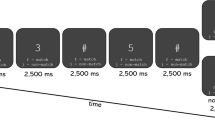Abstract
Saccadic eye movements are controlled by a cortical network composed of several oculomotor areas that are now accurately localized. Clinical and experimental studies have enabled us to understand their specific roles better. These areas are: (1) the parietal eye field (PEF) located in the intraparietal sulcus involved in visuospatial integration and in reflexive saccade triggering; (2) the frontal eye field (FEF), located in the precentral gyrus, involved in the preparation and the triggering of purposive saccades; and (3) the supplementary eye field (SEF) on the medial wall of the frontal lobe, probably involved in the temporal control of sequences of visually guided saccades and in eye-hand coordination. A putative cingulate eye field (CEF), located in the anterior cingulate cortex, would be involved in motivational modulation of voluntary saccades. Besides these motor areas, the dorsolateral prefrontal cortex (dlPFC) in the midfrontal gyrus is involved in reflexive saccade inhibition and visual shortterm memory.
Similar content being viewed by others
Author information
Authors and Affiliations
Rights and permissions
About this article
Cite this article
Gaymard, B., Ploner, C., Rivaud, S. et al. Cortical control of saccades. Exp Brain Res 123, 159–163 (1998). https://doi.org/10.1007/s002210050557
Issue Date:
DOI: https://doi.org/10.1007/s002210050557




